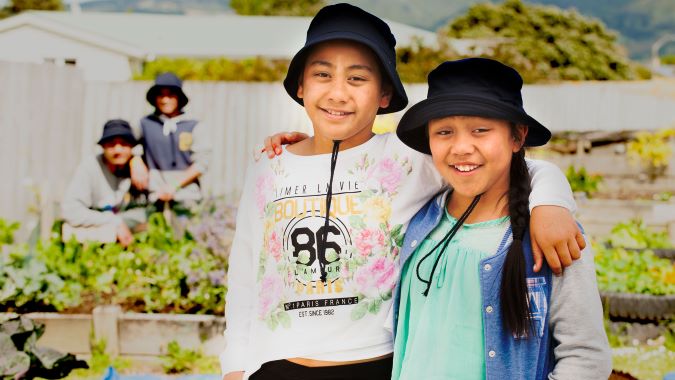Ngā mahi a te rēhia Games and pastimes - Activity collection
This activity collection, "Ngā mahi ā te rēhia - Games and pastimes", is part of the resource collection Te Ao Kori.

About this resource
This teaching and planning activity resource has instructions that help kaiako support ākonga in learning the ngā mahi ā te rēhia (games and pastimes): manu aute (kite making), kōruru (knuckle bones), pōtaka (spinning tops), and poutoti (stilts).
Kaiako can adapt and develop activities from the "Ngā mahi ā te rēhia - Games and pastimes" collection (years 1–10), which is part of the resource collection, Te Ao Kori, to meet the identified learning needs of ākonga.
Ngā mahi a te rēhia - Games and pastimes
Activity collection

Explore the resource collection, Te Ao Kori
This activity resource collection, "Ngā mahi ā te rēhia - Games and pastimes", is part of the resource collection Te Ao Kori.
Ngā mahi ā te rēhia - Games and pastimes collection
Background information
Te Ao Kori collection
Tātaiako cultural competencies for teachers of Māori learners
Include hapū, iwi, and tangata whenua
Techniques, tikanga, and popular ngā mahi ā te rēhia (games and pastimes) vary between hapū and iwi. Acknowledging tangata whenua and the tikanga for Ngā Mahi a te Rēhia in your area can begin with conversations and partnerships with ākonga and whānau who bring expertise to the classroom. If you have no Māori whānau, or hapū or iwi connections within your school, seek introductions to Māori communities through Kāhui Ako (school networks), or talk to the Strategic Advisor Māori at your regional Te Tāhuhu o te Mātauranga The Ministry of Education office.
Whakapapa
Ngā Mahi a te Rēhia play an integral part in the development of physical attributes such as hand and eye coordination. Traditionally, the arts of pleasure were attributed to Raukatauri and Raukatamea. Attributing ngā mahi ā te rēhia to hautupua (legendary characters) explained the origins of these amusements. The season when recreational games and pastimes were often played was just after the crops were harvested and stored. During this harvest festival, Māori gave themselves over to ngā mahi ā te rēhia, a te harikoa – the arts of pleasure and of joyfulness.
Te reo Māori vocabulary
Games such as those in the Ngā Mahi a te Rēhia collection offer an opportunity to use te reo Māori whilst practicing tikanga Māori. In these game contexts, we can use te reo Māori such as:
- Harakeke – New Zealand flax phormium tenax
- Hauora – wellbeing
- Manu pātiki – the flatfish/flounder kite
- Manu taratahi – kite
- Pōtaka – spinning top
- Raupō – bulrush, typha angustifolia
- Ruru tahi – pick up ones
- Ruru rua – pick up twos
- Ruru toru – pick up threes
- Ruru whā – pick up fours
- Teina – younger
- Toetoe – sedge grass, arundo kakao (conspicua)
- Tuakana – older
- Karawhiua - pass
- Taki noho/e noho - asking ākonga to sit
- Taki tū/e tū - asking ākonga to stand
- Whakarongo - listen
Activities
See below for all resources in the activity collection, “Ngā mahi a te rēhia - Games and pastimes".
Poutoti - Stilts
Pōtaka - Spinning top
Manu aute - Kite making
Kōruru - Knuckle bones






